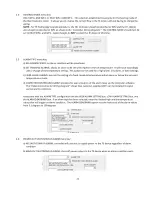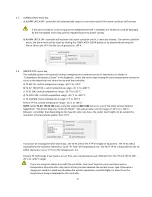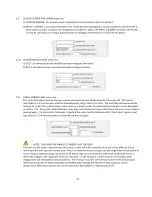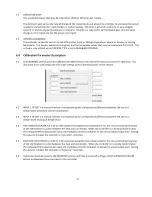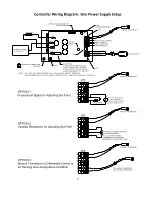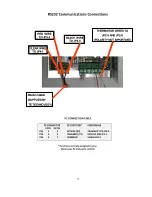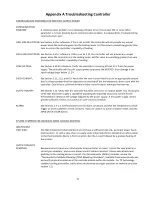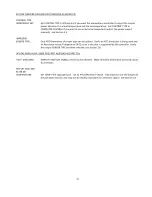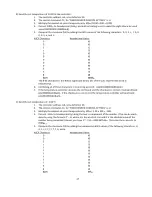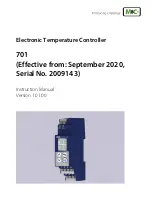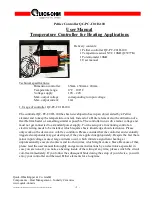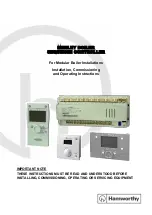
30
5.3.4
The integral gain is calculated as follows: I = 0.54/T where I is the integral gain, and T is the time period, in minutes,
determined in section 5.3.2. Enter this value into the INTEGRAL GAIN.
For example, suppose the system’s period of oscillation with the appropriately set proportional bandwidth was 75
seconds (1.25 minutes). The suggested integral gain is therefore:
I = 0.54/1.25 minutes = 0.43 repeats/minute
5.3.5
The derivate gain is often times difficult to apply and might cause more trouble than it is worth. If you are not
experienced in process control, you may be better off leaving the DERIVATIVE GAIN set to zero.
If you decide to use derivative gain, the other values should be adjusted first.
a) Instead of multiplying the initial bandwidth setting by 2.2, multiply it by 1.7, and enter this as the new
PROPORTIONAL BANDWIDTH setting.
b) Calculate the integral gain as follows: I = 1.2/T, and enter this into the INTEGRAL GAIN setting.
c) Calculate the derivative gain as follows: D = 0.075 x T, and enter this into the DERIVATIVE GAIN setting.
5.4
Setup of the TC-36-25 RS232 is now complete. However, the proportional, integral, and derivative settings are
approximate settings and might need further minor adjustments.
You might also want to save your settings to EEPROM for future recall (see section 2.14)





